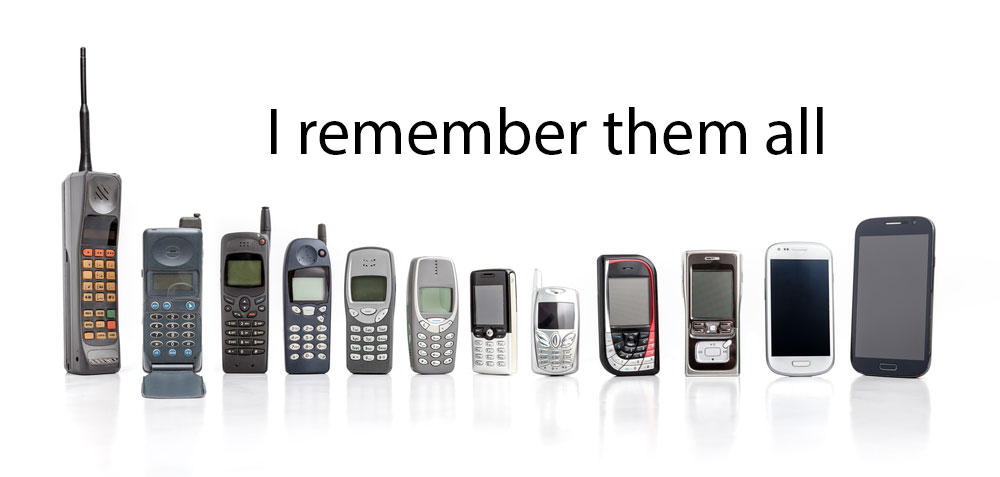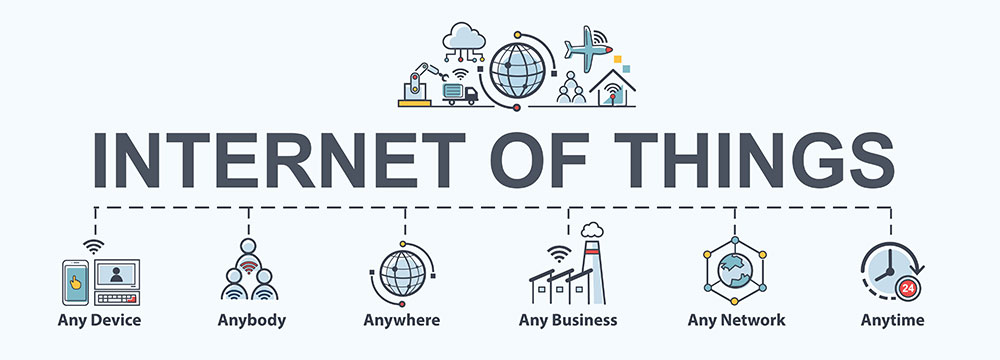Topics:
Sales & Marketing TechnologySubscribe now and get the latest podcast releases delivered straight to your inbox.
Each generation of cellular technology has brought great advances that only lived in our imaginations 20 years ago.
Those of us of a certain age remember well the first generation of cell phones. They were big and clunky and expensive, but they afforded us a level of connectivity we never had before.
As cellular technology has advanced through 4G (also called LTE), we have seen the rise of mobile apps, social media, and streaming video and audio.

Each generation of wireless technology has increased speed. Most changes made the latest version incompatible with the previous generation:
1G was analog cellular.
2G was the first generation of digital cellular technologies.
3G increased speeds to between 200 kilobits per second and a few megabits per second.
4G has brought speeds up to hundreds of megabits per second and even gigabit level speeds.
Now, the next generation of cellular is on the horizon.
5G promises to be an even bigger game-changer, and the advances in technology that it promises will require marketers to be ready to take advantage of what it brings to the table.
Greater Speed
With greater speed comes the ability to move more data faster. How much faster? Up to 10 gigabytes per second or 100 times faster than 4G. Faster connections will allow more people to go online from anywhere. More people online means that markets will grow.
As faster speeds bring increased accessibility and more people enter the market, it will be important for marketers to segment their customer data to create a more personalized experience. Consumers today already expect a certain level of personalization.
As 5G allows us to connect and process data faster, we will be able to connect with more people, who we know more about than ever before.
Although video is already a fast-growing segment of digital marketing, the faster speed of 5G will take video marketing to the next level. Theoretically, with 5G it could take only seconds to download a full-length HD movie.
Currently, 60% of tablet or video viewing is still in the home over broadband. 5G will allow us to consume large video files anywhere on any device.
Faster speeds have many implications for marketers, but upping our game in video marketing should definitely be a priority. (Don’t know where to start? Hop over to this article for ideas on 7 Types of Sales & Marketing Videos You Need to Create Today.)
Lower Latency
5G is expected to advance wireless networking by bringing fiber-like speeds and extremely low latency capabilities to almost any location.
It will also allow us to communicate with our market in real time. Envision being able to have a live video chat with your customer with no lag time. If you haven’t taken advantage of chatbots yet, now may be the time to get started!
Another change that the lower latency of 5G may bring is the decreased use of ad blockers.
Thirty-six percent of people say they use ad blockers because their experience is too slow and ads take too long to load. People may decrease their use of ad blockers because the lag time will no longer be a problem with 5G. This means that marketers will be able to serve ads to more people, faster with 5G.
Other possibilities that the lower latency rates 5G promises include self-driving cars, factory robots, and multiplayer mobile gaming. These are tasks that demand a quick response that today’s 4G networks struggle with or can’t manage at all. Who's ready for a self-driving car?
Ability to Connect to More Devices at Once

5G may be the catalyst that will allow the Internet of Things (IoT) to finally live up to its long-promised potential.
IoT is the idea that anything that can be connected will be connected. augmented reality (AR) and virtual reality (VR) will be more important as it allows marketing and sales teams to customize the customer experience. Consumers will be able to shop, learn and explore wherever they are.
(You can learn more about AR from this episode of The IMPACT Show.)
Smart homes will be connected with thermostats, lighting fixtures, home appliances, cameras, and home security connected to the internet. And all of it can be controlled through devices such as smartphones or smart speakers.
Picture turning on your oven as you are traveling home in your self-driving car, to prepare dinner with a recipe that your computer has pulled up for you, using ingredients that you picked up from the store that had them assembled and ready for you ahead of time.
I wonder if we can get our smart homes to wash the dishes!
For marketers, the IoT allows consumers to tell us what they want on a continuous basis. It may allow us to listen and respond to the needs and desires of our customers based on their behavior.
Real-Time Analytics
With faster data communication between devices, marketers will have access to real-time analytics. This means that it could be possible to optimize and tweak marketing campaigns real-time using AI and marketing automation.
An example of this could be a consumer making a purchase online and, because of informed, real-time analytics they no longer receive ads for what they just purchased. They could then be served ads for related items, accessories, and upgrades.
When Will All This Happen?
Verizon, AT&T, and Sprint have promised 5G devices for the first half of 2019, while T-Mobile says a nationwide network will launch in 2020.
It is expected to be a few years before most of the big changes happen. As a comparison, the first 4G phones in the US appeared in 2010. However, it was 2013 before changes that brought about apps such as Snapchat and Uber happened. If 5G follows the same path, you should expect to see major 5G applications around 2021 or 2022.
5G Has Its Challenges
While 5G is nearly here, the implementation is not without challenges. The rollout across carriers and the adoption of formal specifications are a couple of potential barriers.
When AT&T began installing 5G cell poles on the streets of downtown Baton Rouge, Louisiana, it “created a lot of chaos” as an underground powerline was struck creating a massive power outage in the city.
Loss of privacy is another concern that is raised as location tracking data may become more accurate and precise. 5G also allows the opportunity to collect vast amounts of personal data. In theory, if your mobile network sells your location data, advertisers will be able to see your current location.
In that case, as marketers, we will be able to serve more relevant ads to our audiences based on their location.
The Last Word
The change from 4G to 5G has been likened to moving from a typewriter to a computer. As one who actually learned to type on a typewriter, I can attest to the big difference. The idea is that everybody will be getting what they want anytime, anywhere.

As 4G was rolled out, no one could have predicted the business models such as Facebook, Spotify, and Uber that grew on the back of mobile broadband.
The same will most likely be true for 5G.
As more devices become connected, speed increases and latency decreases, the possibilities are enormous. According to the European Patent Office, the number of patent applications related to “smart connected objects” has surged 54% over the last three years.
It will be exciting to see what new inventions will be created out of 5G. It will also be a time when marketers will need to keep their eyes open to all the new possibilities opening up for them and their customers.
Free Assessment:

